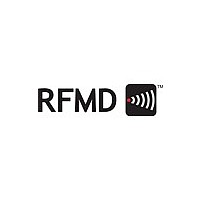RF2052TR7 RFMD, RF2052TR7 Datasheet - Page 13

RF2052TR7
Manufacturer Part Number
RF2052TR7
Description
IC RF MIXER PLL/VCO 32-QFN
Manufacturer
RFMD
Datasheet
1.RF2052TR7.pdf
(38 pages)
Specifications of RF2052TR7
Rf Type
UHF, VHF
Frequency
30MHz ~ 2.5GHz
Number Of Mixers
1
Gain
-2dB
Noise Figure
12dB
Secondary Attributes
Up/Down Converter
Current - Supply
75mA
Voltage - Supply
2.7 V ~ 3.6 V
Package / Case
32-VFQFN Exposed Pad
Lead Free Status / RoHS Status
Lead free / RoHS Compliant
Other names
689-1089-2
Available stocks
Company
Part Number
Manufacturer
Quantity
Price
Company:
Part Number:
RF2052TR7
Manufacturer:
RFMD
Quantity:
9 200
Crystal Oscillator
The PLL may be used with an external reference source, or its own crystal oscillator. If an external source (such as a TCXO) is
being used it should be AC-coupled into one of the XO inputs, and the other input should be AC-coupled to ground.
A crystal oscillator typically takes many milliseconds to settle, and so for applications requiring rapid pulsed operation of the
PLL (such as a TDMA system, or Rx/Tx half-duplex system) it is necessary to keep the XO running between bursts. However,
when the PLL is used less frequently, it is desirable to turn off the XO to minimize current draw. The REFSTBY register is pro-
vided to allow for either mode of operation. If REFSTBY is programmed high, the XO will continue to run even when ENBL is
asserted low. Thus the XO will be stable and a clock is immediately available when ENBL is asserted high, allowing the chip to
assume normal operation. On cold start, or if REFSTBY is programmed low, the XO will need a warm-up period before it can pro-
vide a stable clock. The length of this warm-up period will be dependant on the crystal characteristics.
The crystal oscillator circuit contains internal loading capacitors. No external loading capacitors are required, dependant on
the crystal loading specification. The internal loading capacitors are a combination of fixed capacitance, and an array of
switched capacitors. The switched capacitors can be used to tune the crystal oscillator onto the required center frequency and
minimize frequency error. The PCB stray capacitance and oscillator input and output capacitance will also contribute to the
crystal’s total load capacitance. The register settings in the CFG4 register for the switched capacitors are as follows:
The on chip fixed capacitance is approximately 4.2pF.
Wideband Mixer
The RF2052 includes a wideband, double-balanced Gilbert cell mixer. It supports RF/IF frequencies of 30MHz to 2500MHz
using the internal VCO to provide the LO frequency of 300MHz to 2400MHz. The mixer has an input port and an output port
that can be used for either IF or RF, i.e. for up conversion or down conversion. The mixer current can be programmed to
between 15mA and 35mA depending on linearity requirements, using the MIX2_IDD<3:0> word in the CFG2 register. The
majority of the mixer current is sourced through the output pins via either a centre-tapped balun or an RF choke in the external
matching circuitry to the supply.
The RF mixer input and output ports are differential and require simple matching circuits optimized to the specific application
frequencies. A conversion gain of approximately -3dB to 0dB is achieved with 100 differential input impedance, and the out-
puts driving 200 differential load impedance. Increasing the mixer output load increases the conversion gain.
The mixer has a broadband common gate input. The input impedance is dominated by the resistance set by the mixer 1/gm
term, which is inversely proportional to the mixer current setting. The resistance will be approximately 85 at the default mixer
current setting (100). There is also some shunt capacitance at the mixer input, and the inductance of the bond wires to con-
sider at higher frequencies.
The mixer output is high impedance, consisting of a resistance of approximately 2k in parallel with some capacitance. The
mixer output does not need to be matched as such, just to see a resistive load. A higher resistance load will give higher output
voltage and gain. A shunt inductor can be used to resonate with the mixer output capacitance at the frequency of interest. This
inductor may not be required at lower frequencies where the impedance of the output capacitance is less significant. At higher
output frequencies the inductance of the bond wires becomes more significant.
For more information about the mixer port impedances and matching, please refer to the RF205x Family Application Note on
Matching Circuits and Baluns.
DS100630
• Coarse Tune XO_CT (4 bits) 15*0.55pF, default 0100
• Fine Step XO_CR_S (1 bit) 1*0.25pF, default 0
7628 Thorndike Road, Greensboro, NC 27409-9421 · For sales or technical
support, contact RFMD at (+1) 336-678-5570 or sales-support@rfmd.com.
RF2052
13 of 38



















